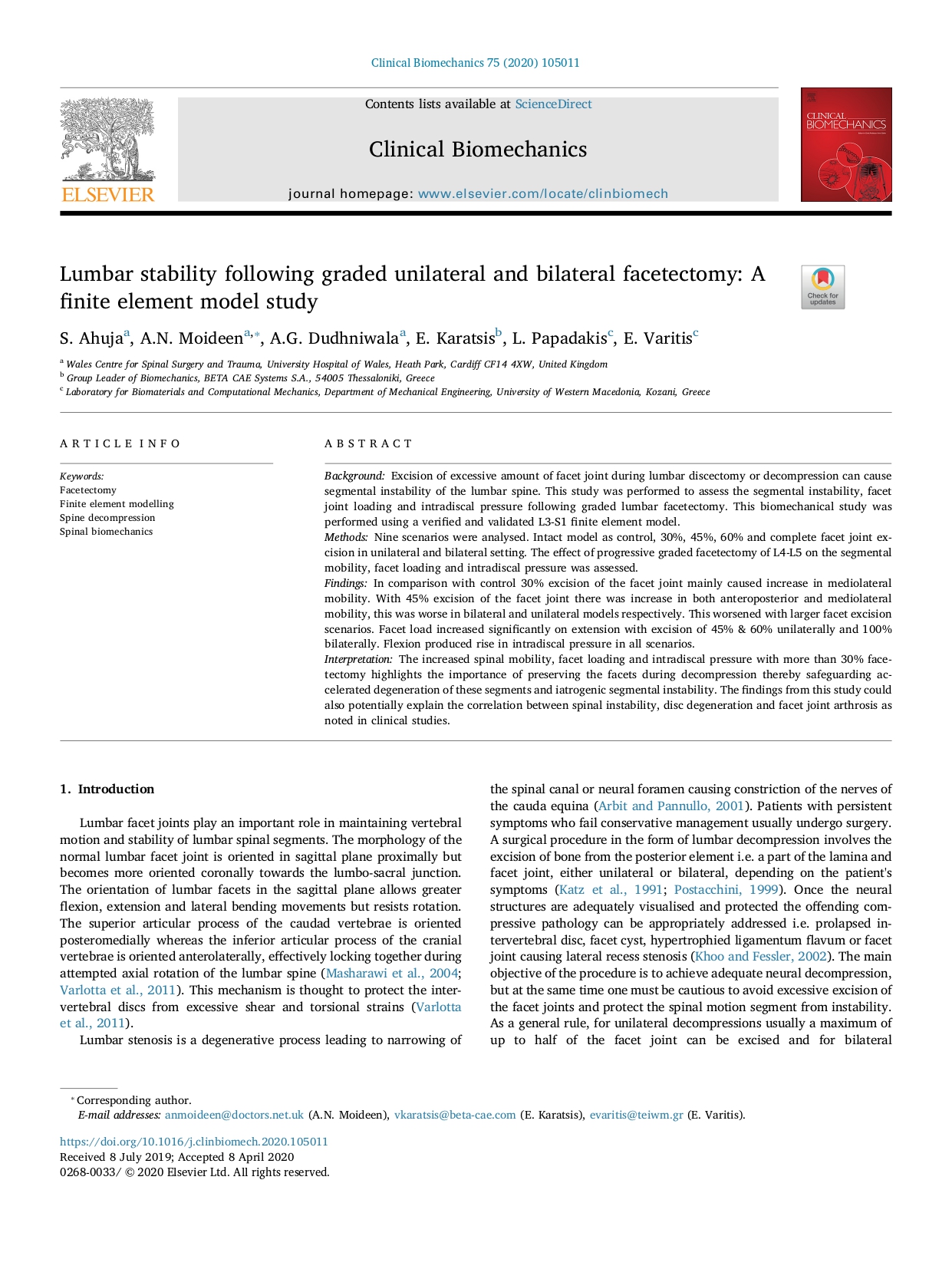Τitle
Lumbar stability following graded unilateral and bilateral facetectomy: A finite element model study
Lumbar stability following graded unilateral and bilateral facetectomy: A finite element model study
Clinical Biomechanics 75 (2020) 105011.
Background: Excision of excessive amount of facet joint during lumbar discectomy or decompression can cause segmental instability of the lumbar spine. This study was performed to assess the segmental instability, facet joint loading and intradiscal pressure following graded lumbar facetectomy. This biomechanical study was performed using a verified and validated L3-S1 finite element model.
Methods: Nine scenarios were analysed. Intact model as control, 30%, 45%, 60% and complete facet joint excision in unilateral and bilateral setting. The effect of progressive graded facetectomy of L4-L5 on the segmental mobility, facet loading and intradiscal pressure was assessed.
Findings: In comparison with control 30% excision of the facet joint mainly caused increase in mediolateral mobility. With 45% excision of the facet joint there was increase in both anteroposterior and mediolateral mobility, this was worse in bilateral and unilateral models respectively. This worsened with larger facet excision scenarios. Facet load increased significantly on extension with excision of 45% & 60% unilaterally and 100% bilaterally. Flexion produced rise in intradiscal pressure in all scenarios.
Interpretation: The increased spinal mobility, facet loading and intradiscal pressure with more than 30% facetectomy highlights the importance of preserving the facets during decompression thereby safeguarding accelerated degeneration of these segments and iatrogenic segmental instability. The findings from this study could also potentially explain the correlation between spinal instability, disc degeneration and facet joint arthrosis as noted in clinical studies.
